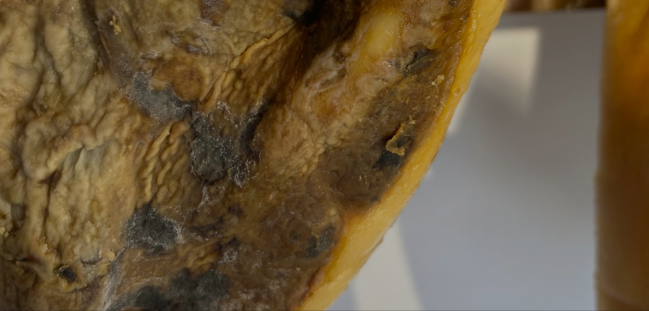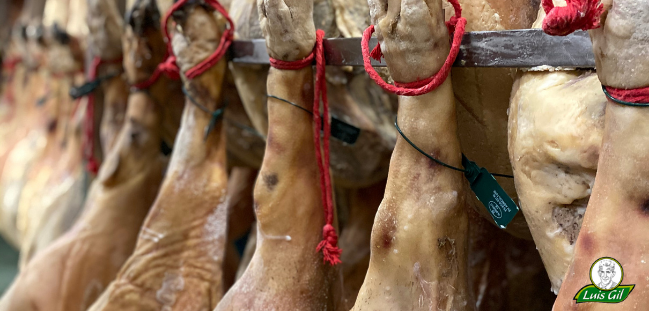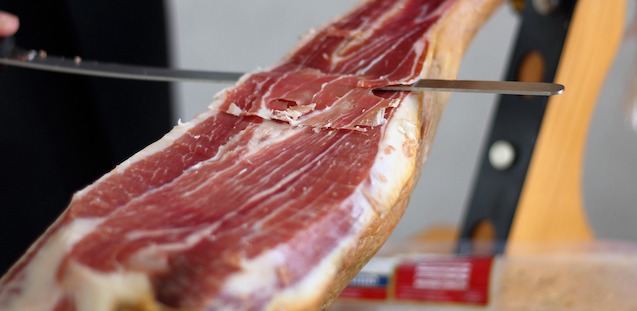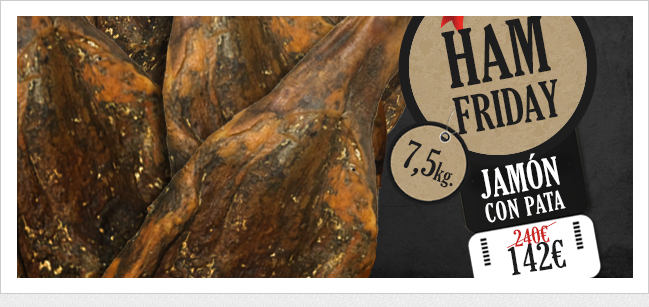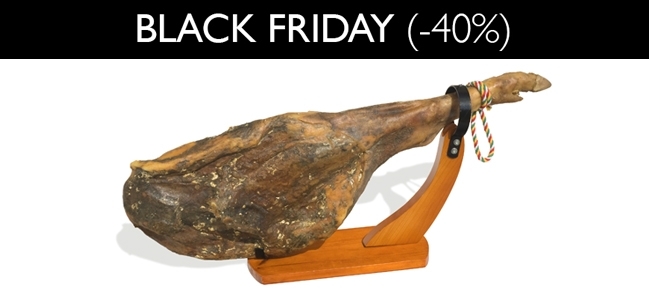When we are looking for a quality ham, one of the first indicators that we can analyze is your skin. External appearance gives us clues about its healing, maturation and general quality. Next, we tell you what details you should see to identify a good ham:
1.Presence of natural molds
A good ham can have whitish or greenish molds on the skin. This is a positive sign, since it indicates that the healing process has been carried out naturally and adequately. These molds appear due to maturation in wineries and dryers, where moisture and temperature favor the natural flora of ham. If you see these spots, do not worry: they can be removed by rubbing the surface with a dry cloth or a little oil.
2.Wrinkles and skin texture
Wrinkles on the skin of ham are a good sign. They indicate that there has been a correct loss of moisture during healing, which contributes to its characteristic flavor and texture. A ham with the skin too smooth could have been dried artificially or in non -ideal conditions.
3.Dark color and natural brightness
The skin of a good ham must have a dark tone and a natural glow. This reflects a correct fat infiltration and a well -executed healing process. If the skin looks opaque or too dry, it can be an indicative of inappropriate conservation or lower quality.
4.QUALITY OR CERTIFICATION SEAL
Depending on the type of ham, it is important to verify the presence of stamps or labels that guarantee their quality and origin. In the case of our ham, the EUROHOJA of its label guarantees that it is a product with ecological certification, 100% natural, free of additives and artificial preservatives. In our case, it is made only with the legs of our pigs, salt and a slow healing.
Conclusion
A good ham is recognized not only for its aroma and flavor, but also for its external appearance. Natural molds, wrinkles in the skin, a dark color with brightness and the presence of certifications are details that will help you choose a quality ham.

